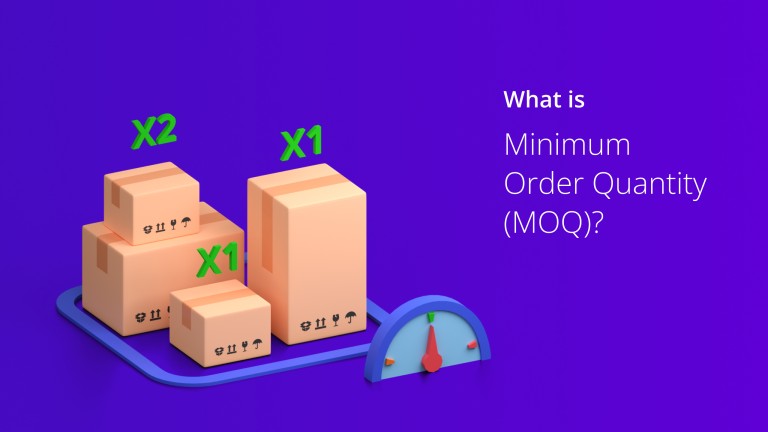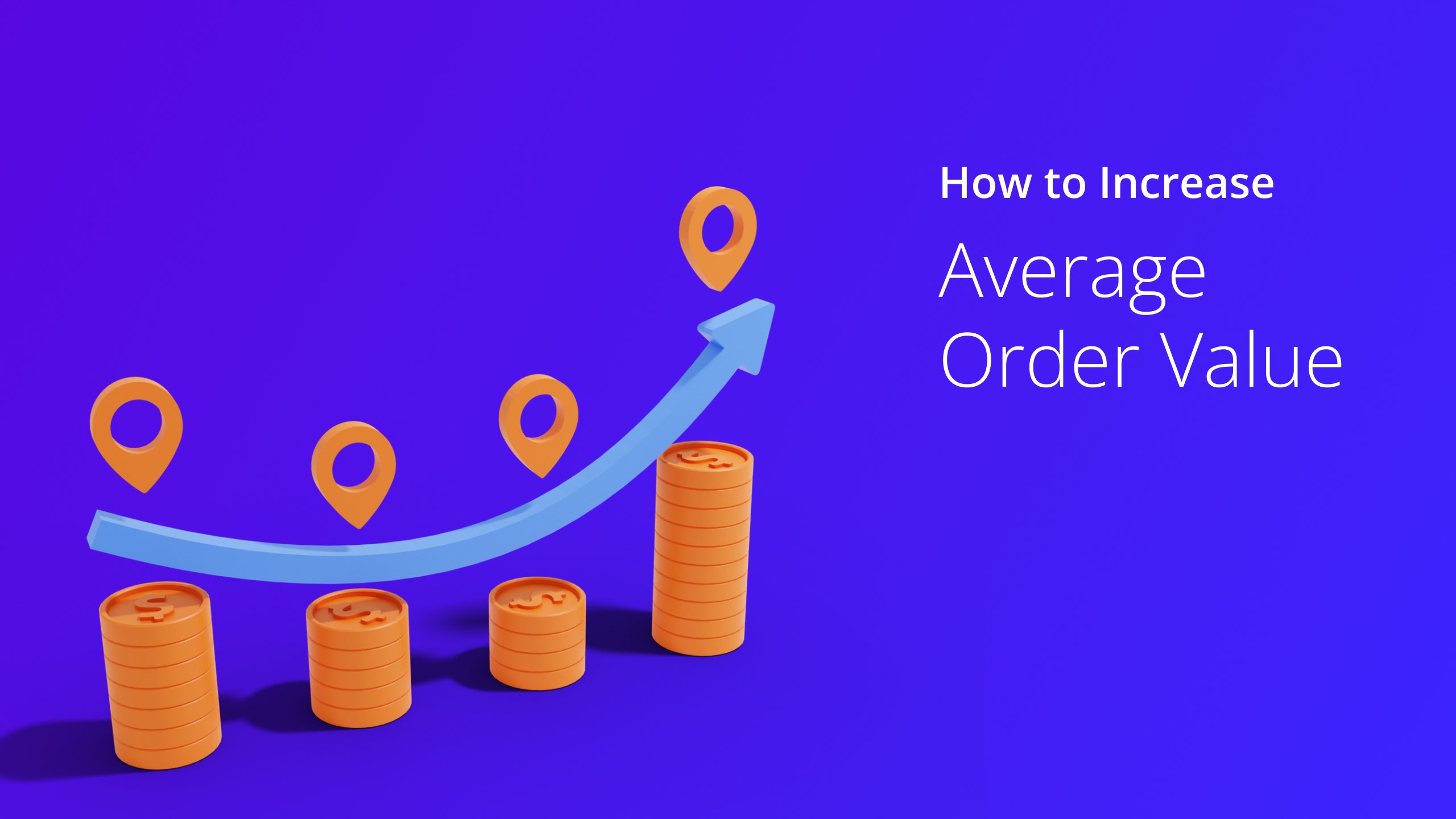If you’re a business owner, supplier, or manufacturer, you’ve probably heard the term Minimum Order Quantity (MOQ) thrown around quite a bit.
MOQ can significantly impact your profit margins and the bottom line. Therefore, you must learn in detail about it to take control of your supply chain and maximize profits.
To simplify your job, we’ll provide a quick guide to understanding MOQ and its implications for your business in this blog post.
From the benefits and drawbacks of MOQ to the tips for negotiating with suppliers, this guide will give you all the information you need to know about optimizing your purchasing strategy for MOQ.
Table of Contents
What is Minimum Order Quantity(MOQ)?
Minimum Order Quantity (MOQ) refers to the minimum number of units a supplier or manufacturer requires customers to purchase in one order.
MOQ helps suppliers and manufacturers optimize production processes, reduce costs, and improve inventory management.
For example, let’s say you’re a supplier of custom t-shirts. Your MOQ may be 100 units per order. Anyone wanting to order with you must purchase at least 100 t-shirts. By setting this minimum quantity threshold, you can streamline your production process and reduce the cost per unit by producing in bulk.
However, MOQ can be challenging for buyers.
Let’s say a local charity organization needs 50 custom t-shirts for its upcoming fundraising event. But since your MOQ is 100 units per order, they must purchase at least 100 t-shirts from you.
As a result, the charity organization may end up with extra t-shirts they don’t need or want, which can be wasteful and costly.
Want To See For Yourself How Route4Me Can Help You Boost Profits?

Types of Minimum Order Quantities (MOQ)
MOQs can be simple or complex, depending on what is being purchased. Your supplier will likely have various economic considerations related to orders, such as machinery and materials expenses, cost of shipping and handling, accounting fees, and billing costs.
Simple MQQ
Simple Minimum Order Quantity (MOQ) refers to set quantities of a product that a buyer must purchase from a supplier without any additional criteria.
Complex MQQ
Complex minimum order quantity (MOQ) is a more advanced form of MOQ that requires the buyer to meet specific criteria in addition to the agreed-upon quantity. This could include minimum dollar value, volume/weight, or time-based requirements.
For example, a supplier may require buyers to purchase at least 50 units of their product at a minimum value of $500 over one month. This would be considered a complex MOQ because it involves quantity and valuation elements and time-based requirements.
Complex MOQs are generally used for more expensive items, such as machinery or furniture, where additional specifications must be considered.
Complex MOQs can provide suppliers more flexibility when setting their purchasing requirements since they can combine different criteria based on their needs. However, they also tend to be more difficult for buyers to understand and comply with than simple MOQs.
High vs. Low Minimum Order Quantities
Now that you understand the basics of minimum order quantities, there is one more thing to consider. High and Low MQQ.
High MQQ
It means the buyer must purchase many units without additional criteria. This is typically based on production costs or efficiency levels for products with large orders, bulk discounts, or expensive items that require different specifications like a minimum dollar amount, volume/weight, and time-based requirements.
The MOQ amount varies depending on the purchased product and the supplier’s policies. For example, a company may require customers to buy 500 pieces at a time before receiving any discounts due to production costs associated with such an order.
Some suppliers even offer lower MOQs for certain products if multiple suppliers produce similar items.
High MOQs can benefit buyers looking to purchase items in large quantities as this would make it more cost-effective for them than buying just a few units at once.
On the other hand, it can also disadvantage those buyers who only need a few items, as it might be too expensive to meet the required MOQ amount.
Low MQQ
Low minimum order quantity (MOQ) refers to the least product a supplier will accept for an order.
The minimum amount can vary greatly depending on the supplier and the type of product you purchase. Generally, suppliers have an established minimum order quantity requirement. Still, there may be opportunities for negotiation if multiple suppliers are available that produce similar items or if there is a large volume purchase.
Additionally, buyers should consider any additional fees associated with ordering in higher quantities, such as shipping or storage fees, which could offset any bulk discounts received by meeting the supplier’s low MOQ requirements.
Difference Between Minimum Order Quantity (MQQ) and Economic Order Quantity (EOQ)
The minimum order quantity (MOQ) is the least amount of an item a supplier is willing to sell. In contrast, Economic Order Quantity (EOQ) determines the optimal inventory level for ordering and stocking purposes.
The supplier specifies the MOQ, usually measured in units, such as pieces or cases. This number can vary widely depending on the product and supplier, but it changes only sometimes.
The MOQ may be negotiable if multiple suppliers for the same product or large quantities are being purchased. Also, buyers should consider any fees associated with higher amounts, such as shipping or storage fees, when calculating their MOQ requirements.
On the other hand, EOQ refers to an equation used to determine how much inventory should be held and ordered to minimize costs while meeting customer demand.
It considers ordering costs, holding costs, and demand levels. This equation can provide insight into how much inventory needs to be on hand at all times to keep up with customer orders while minimizing additional expenses related to ordering and stocking inventory.
How to Calculate Minimum Order Quantity (MOQ)
Calculating Minimum Order Quantity (MOQ) is essential for buyers who want to get the most value. The MOQ equation takes into account four key components, which are setup cost (S), unit price (P), carrying cost of inventory (C), and the number of times the item is sold per year (I).
The setup cost (S) includes all fixed costs of an individual order. This usually comprises ordering, handling, and packaging costs, as well as any other expenses, such as labor costs, that may be required to fulfill the order.
The unit price (P) is the amount a buyer pays for each item. It’s important to note that this does not always refer to the purchasing price; it can also include anticipated discounts or any savings from purchasing in bulk.
Carrying Cost (C) covers all expenses incurred in keeping a certain inventory level on hand, such as storage fees, insurance costs, interest paid on inventory, etc.
The carrying cost of inventory, C, considers storage costs, interest paid on stock, insurance premiums, etc. All these elements are added together to determine C.
Lastly, annual sales volume (I) indicates how often an item needs to be sold over a given time frame, typically measured in years.
This helps you plan ahead by understanding how quickly you can expect to receive returns on your investment. It’s often helpful to look at past sales figures when considering I, as it may help provide a more accurate estimate.
Once you know S, P, C, and I then, you can calculate your MOQ using this formula:
MOQ = S x P x C x I
For example if we assume that S = $50, P = $10/unit, C = 10%/year, and I = 100 then our MOQ calculation would look like this:
MOQ = 50 x 10 x 0.1 x 100 = 5000 units
Benefits of Minimum Order Quantity (MOQ) for Buyers and Suppliers
MOQ benefits both buyers and suppliers. The following are some of the advantages that highlight the value of MOQ.
How Minimum Order Quantity (MoQ) Benefits Buyers
- Cost savings: Suppliers often offer discounts or lower prices for larger orders. By meeting the MOQ requirement, buyers can use these savings and reduce their per-unit costs.
- Improved inventory management: Buyers can better manage their inventory levels and reduce reordering frequency by purchasing larger quantities at one time. This can help avoid stockouts and ensure that products are always available when needed.
- Enhanced supplier relationships: Meeting MOQ requirements shows commitment and loyalty to the supplier, which can lead to better relationships over time. Strong supplier relationships can improve service levels, faster delivery times, and access to special promotions or deals.
- Customization opportunities: Some suppliers may only offer customization options for orders that meet certain MOQs. By meeting these requirements, buyers can customize their products with unique designs or branding elements.
- Reduced administrative costs: Placing fewer, larger orders can reduce administrative costs associated with managing multiple smaller orders, such as processing invoices, payments, and shipping documents.
Benefits of Minimum Order Quantity(MOQ) for Sellers
- Improved Production Planning: By setting an MOQ, suppliers can better plan their production schedules and optimize their resources. This allows them to avoid overproduction and reduce waste, ultimately saving costs.
- Reduced Administrative Costs: Processing small orders can be time-consuming and costly for suppliers. By setting an MOQ, they can ensure that each order is large enough to cover administrative costs such as processing fees, paperwork, and invoicing.
- Increased Revenue: MOQs encourage larger orders from buyers, increasing revenue for suppliers and minimizing customer acquisition costs. Higher order volumes also lead to economies of scale, which means lower costs per unit as production increases.
- Better Inventory Management: An MOQ helps suppliers manage their inventory more efficiently by keeping stock levels stable and reducing the risk of stockouts or overstocking.
- Stronger Relationships with Buyers: Clear communication about MOQs helps build trust between buyers and suppliers by establishing expectations upfront. This leads to better relationships based on mutual understanding and respect.
How to Negotiate Minimum Order Quantities with Suppliers
Negotiating Minimum Order Quantities (MOQs) with suppliers is a great way to ensure you get the best price and product for your business. Below are some tips to help you get a better deal.
Do Your Research
You must perform extensive research to negotiate a better deal with suppliers. This helps you more accurately assess a supplier’s ability to meet the required order quantity, determine the most cost-effective shipping options, and establish a baseline of pricing expectations.
Doing a thorough investigation into the supplier’s past performance, quality control processes, and customer service history can help you make informed decisions about how to move forward. This preparation lets you substantiate requests for more favorable terms or discounts during negotiations.
Also, compare prices between suppliers to understand what is reasonable and leverage the negotiation process.
Split the Order into Different Parts
Splitting up an order can reduce the risks of placing large orders and better negotiate prices and MOQs with suppliers.
Splitting the order allows individual orders to match the supplier’s minimum quantities more accurately. This tactic helps you secure lower prices for your goods. Because the suppliers don’t need to overstock inventory for each smaller order.
Furthermore, splitting the order can help you spread payments over several invoices rather than all at once. This is beneficial from a cash flow perspective.
Splitting the order is especially useful when dealing with multiple suppliers. It reduces the need for bulk purchase agreements and allows you to shop for better deals from different vendors.
Get Another Buyer to Join Hands
Teaming up with another buyer to negotiate MOQs with suppliers can be beneficial in several ways. This is because multiple buyers can purchase larger quantities from one supplier, reducing the supplier’s risk and increasing their incentive to lower the MOQ requirement in exchange for increased sales.
Plus, having another buyer benefits both parties from economies of scale. This means you can save on shipping costs by purchasing larger orders simultaneously.
You don’t need to depend on a single supplier or factory and will have more options without increasing the risk of supply shortages or disruptions.
Furthermore, having another buyer to work with on negotiations can make it easier to research suppliers and stay organized throughout the process.
Finally, having a partner helps increase the credibility of each individual buyer in the eyes of the supplier. It may give them more confidence to accept smaller orders or negotiate lower prices.
Negotiate Materials
When negotiating MOQs with suppliers, you should also consider negotiating the materials used. Specifically, you should ask for samples of raw materials to check the quality and determine if any alternatives are available that are more cost-effective.
You can choose a lower grade of material if it meets your requirements and ask for a better deal on the purchase price since lower-cost raw materials can lead to more cost savings for both parties.
Request Discounts
You should always request discounts on bulk orders when negotiating MOQs with suppliers.
Asking for a discount demonstrate you are serious about getting the most cost-effective solution. And it could push suppliers to reduce their pricing.
Additionally, requesting a discount can help you reduce your total costs and meet your preferred price point.
By researching and presenting a compelling case for why a discount would be beneficial, you can increase your chances of obtaining lower prices from the supplier. This can include proof of long-term purchase, volume commitment, or payment terms such as prepayment or cash on delivery.
Final Thoughts about Minimum Order Quantity (MOQ)
Minimum order quantity (MOQ) affects many aspects of the purchasing process, from negotiation and price calculations to inventory tracking.
By understanding what minimum order quantity is, how to calculate it, and its pros and cons, buyers can make more informed decisions that allow them to receive a quality product while keeping costs low.
Although it’s essential to be flexible with MOQs, knowing when to walk away will help you get the most cost-effective solution in the long run.
For More Tips, Check Out Route4Me Route Planner.
Want To See For Yourself How Route4Me Can Help You Boost Profits?



